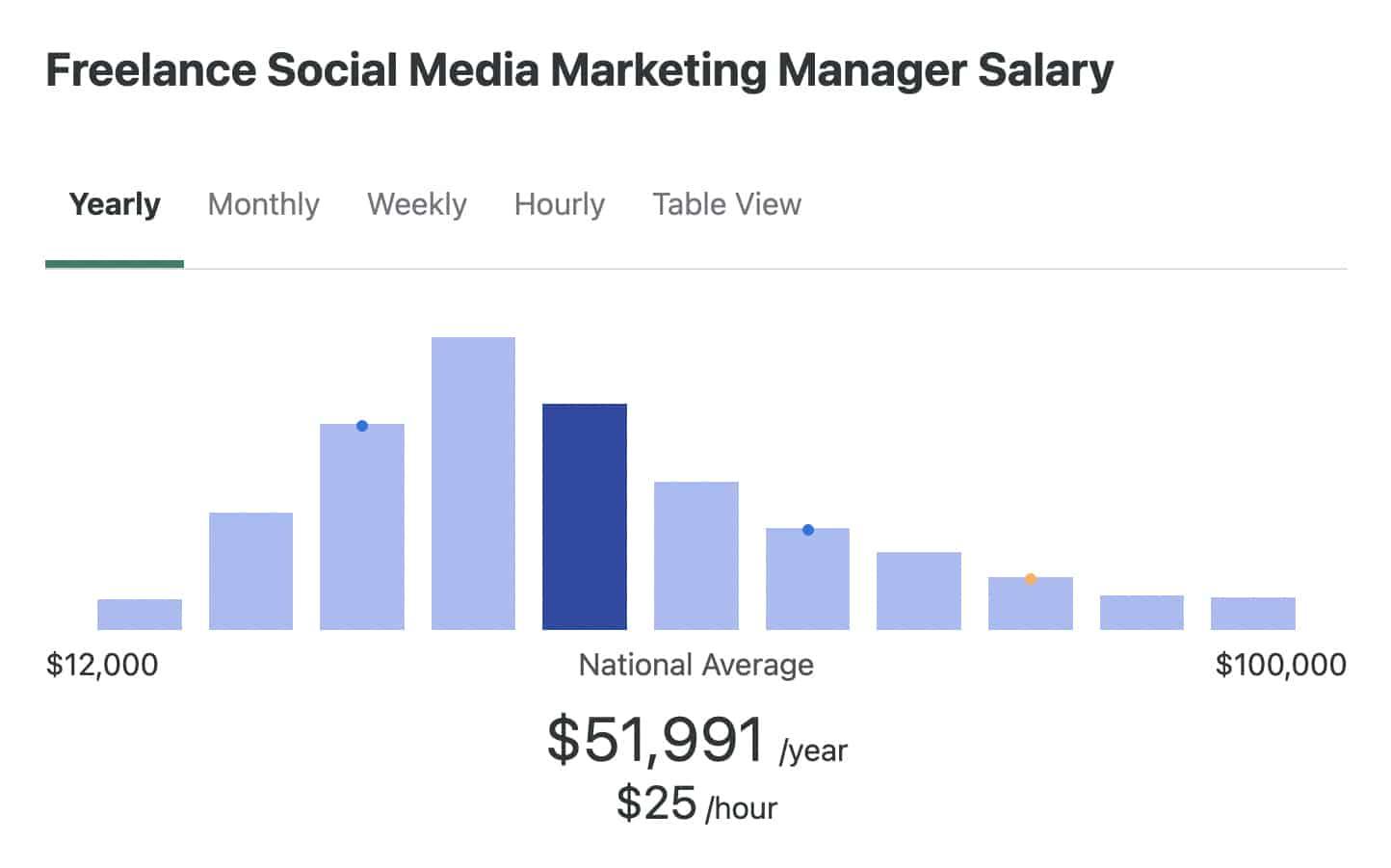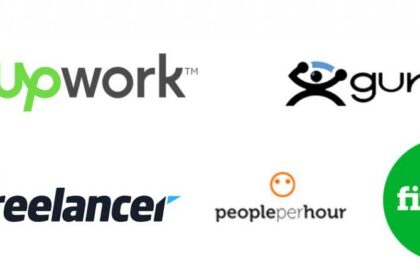In an ever-evolving gig economy, the world of freelancing stands as a testament to both independence and innovation. As more professionals choose to break free from traditional employment, the question of how to navigate the diverse landscape of freelance rates and pricing becomes increasingly vital. What determines the value of creative work? How do you balance quality with affordability in an age where competition is just a click away? This exploration delves into the intricate interplay of factors that influence freelance pricing, offering insights on how both seasoned freelancers and newcomers can set their rates with confidence, transparency, and a keen understanding of market dynamics. Whether you’re a graphic designer, writer, or consultant, the journey toward establishing fair compensation for your skills is not just a numbers game; it’s about recognizing worth in a world rife with possibilities. Join us as we unravel the complexities of freelance pricing, equipping you with the tools to navigate this essential aspect of your career with clarity and purpose.
Freelance Writing
Understanding the diverse factors that influence freelance rates is crucial for both established writers and those just stepping into the world of freelancing. As you navigate this landscape, consider the following elements that can shape your pricing structure:
- Experience Level: Your expertise can significantly impact your rates. More experienced writers generally command higher fees.
- Project Complexity: The more specialized the subject matter, the higher the rates may be. Technical writing requires deeper knowledge.
- Client Budget: Adjust your rates based on the client’s financial capacity, especially if they are a long-term partner.
- Market Demand: Stay informed about current trends to align your pricing with industry standards effectively.
- Turnaround Time: Urgency can justify premium pricing; shorter deadlines often require a higher fee.
To further illustrate the varying rates, here is a comparative look at typical pricing models adopted by freelance writers:
| Pricing Model | Typical Range |
|---|---|
| Per Word | $0.10 – $1.00 |
| Per Hour | $25 – $150 |
| Project-Based | $100 – $5,000+ |

Freelancing Platforms
serve as the vital intersection between talent and opportunity, offering a myriad of options tailored to suit various skills and specialties. Whether you are a graphic designer, writer, or developer, these marketplaces provide a structured environment to connect with clients while also establishing your pricing strategies. Within this competitive landscape, here are some of the leading platforms you might consider:
- Upwork – Known for its diverse project offerings and flexibility.
- Fiverr - Ideal for creative professionals looking to sell specific services.
- Freelancer - Offers a broad range of job categories, great for bidding.
- PeoplePerHour – Excellent for freelancers focused on hourly contracts.
As you explore these platforms, it’s essential to understand how each influences pricing practices. Many platforms allow freelancers to set hourly rates or project-based fees, but they also impose service fees that can impact net earnings. Below is a quick overview of typical fees associated with popular platforms:
| Platform | Service Fee (%) | Payment Schedule |
|---|---|---|
| Upwork | 5% – 20% | Weekly |
| Fiverr | 20% | Upon completion |
| Freelancer | 10% – 20% | Varies by project |
| PeoplePerHour | 20% | Weekly |

Freelance Graphic Design
In the vibrant world of , setting your rates can be both an art and a science. Factors such as experience level, niche specialization, and project complexity play crucial roles in determining your pricing strategy. Designers often utilize two main pricing structures: hourly rates and fixed project fees. While hourly rates can offer flexibility for ongoing projects, fixed rates provide clarity for clients. To ensure competitiveness, it’s essential to conduct thorough research on current market rates and align your pricing with your unique skill set and portfolio. Consider these aspects:
- Skill Level: More experienced designers can justify higher rates.
- Niche Market: Specialization in sectors like UX/UI or branding may allow for premium pricing.
- Location: Geographic location can influence client expectations and budget.
To break it down further, here is a simple pricing table that reflects common industry standards for various service types:
| Service Type | Hourly Rate | Fixed Project Fee |
|---|---|---|
| Logo Design | $50 - $150 | $500 – $2,000 |
| Website Mockup | $70 – $120 | $800 – $3,000 |
| Social Media Graphics | $30 – $100 | $250 – $1,000 |
Ultimately, effective communication about your pricing model is vital for establishing trust with clients. Transparency in how you arrive at your rates—be it through extensive research of the industry standards or through showcasing the value your unique perspective brings—can set the stage for fruitful professional relationships. Remember, finding the right balance between attracting clients and valuing your work is critical in this dynamic landscape.

Freelance Web Development
Setting the right price for services can be both an art and a science. Many freelancers base their rates on factors such as experience, specialization, project complexity, and market demand. It’s essential to consider not just the time spent on a project but also the value provided to the client. Common pricing models include:
- Hourly Rates: Charging by the hour is straightforward and allows for flexibility as the project evolves.
- Fixed Project Fees: A set price for the entire project can be appealing for clients who want to know costs upfront.
- Value-Based Pricing: Pricing based on the perceived value of the service to the client rather than just the hours worked.
Furthermore, understanding the competitive landscape is crucial. Market research can help freelancers gauge what similar professionals charge. Consider factors such as geographic location and niche market to adjust prices accordingly. The following table illustrates a basic overview of pricing across different experience levels:
| Experience Level | Hourly Rate (USD) |
|---|---|
| Entry Level | $25 – $50 |
| Mid-Level | $50 – $100 |
| Senior Level | $100 – $200+ |

Freelance Marketing Consultant
Determining the right pricing strategy as a requires a delicate balance between market demand and your unique skill set. It’s vital to research industry standards to ensure your rates remain competitive while accurately reflecting the quality of your services. Consider the following factors when setting your prices:
- Experience Level: More experienced consultants generally command higher fees.
- Project Scope: The complexity and duration of a project can significantly influence your pricing.
- Expertise: Specializing in a niche can justify premium rates.
Additionally, structuring your pricing can enhance client understanding and satisfaction. Common pricing models include hourly rates, project-based fees, and retainers, each suited for different engagement types. Below is a simple table that outlines potential pricing models:
| Pricing Model | Description | Ideal For |
|---|---|---|
| Hourly Rate | Charge clients for each hour worked. | Short-term projects or consultations. |
| Project-Based Fee | A set fee for the entire project. | Defined deliverables with clear timelines. |
| Retainer | A monthly fee for ongoing services. | Long-term clients needing sustained support. |

Freelancing for Beginners
Understanding how to set your rates is crucial when starting your freelancing journey. Pricing your services appropriately can be a balancing act between gaining clients and ensuring your financial sustainability. Consider factors such as your skills, experience, and the market demand. Start by researching industry standards and look at what others in your niche are charging. Here are some tips to keep in mind:
- Understand your value: Reflect on what unique skills you bring to the table.
- Market research: Analyze your competitors’ pricing, but don’t feel pressured to match it.
- Cost of living: Factor in your expenses and location to ensure you cover your costs.
As you establish your pricing strategy, consider different pricing models that align with your business goals. You might choose from hourly rates, project-based fees, or retainers. Each model has its benefits, and finding the right fit can enhance your income potential. Here’s a quick overview of common pricing structures:
| Pricing Model | Description | Best For |
|---|---|---|
| Hourly Rate | Charges based on time spent on projects. | Short-term projects requiring flexibility. |
| Project-Based Fee | A flat fee for completing a specific project. | Well-defined projects with clear deliverables. |
| Retainer | Clients pay a regular fee for ongoing work. | Long-term relationships with consistent work. |

Freelance Project Management
requires a unique set of skills and an astute understanding of how to navigate rates and pricing strategies. When setting your rates, consider the following factors that can influence your pricing structure:
- Experience level: Your years in the industry can justify higher rates.
- Complexity of the project: More intricate projects often demand greater expertise and therefore, higher pricing.
- Client budget: Understanding your client’s financial constraints can help tailor your proposal effectively.
- Market demand: Keeping tabs on what others in the field are charging will allow you to remain competitive.
A well-defined pricing strategy not only reflects your worth but also helps you attract the right clients.
It’s essential to communicate project costs clearly and transparently. Consider implementing various pricing models based on project needs, such as:
| Pricing Model | Description |
|---|---|
| Hourly Rate | Charging for every hour worked, allowing flexibility for varying project scopes. |
| Fixed Rate | A set price for an entire project, beneficial for projects with well-defined tasks. |
| Retainer | A monthly fee for ongoing support, providing income stability for both freelancer and client. |
When you tailor your approach to the project and client, you create a sustainable freelancing career while ensuring both parties feel valued and satisfied.

Remote Freelance Jobs
In the world of freelance work, the rise of remote opportunities has transformed how professionals approach their careers. With a vast array of platforms available, freelancers can now connect with clients from around the globe, creating a competitive but rewarding landscape. Key industries such as graphic design, writing, and software development have embraced this shift, enabling talented individuals to find gigs that suit their skills and lifestyle. As a freelancer, understanding the intricacies of pricing your services is essential in navigating this landscape effectively.
Setting competitive rates not only involves evaluating your experience and expertise but also considering market demand and geographic factors. To assist freelancers in determining their pricing strategy, here are some essential elements to consider:
- Skill Level: Novice, Intermediate, Expert
- Project Scope: Hourly vs. Project-based pricing
- Industry Standards: Research common rates for your field
| Skill Level | Average Hourly Rate |
|---|---|
| Novice | $15 - $30 |
| Intermediate | $30 – $60 |
| Expert | $60 - $150+ |

Freelance Photography
Setting your rates is both an art and a science. Factors such as your experience, specialization, and market demand play crucial roles in determining your worth. While it’s tempting to undercut competitors to secure clients, this can devalue your work. Instead, consider establishing a pricing framework based on your skill level and the specific services you offer. This may involve evaluating your time investment, skill expertise, and the end value you provide to clients. The financial and emotional reward of pricing your work appropriately often outweighs the short-term gains of lower pricing.
Transparency is key when discussing rates with clients. To facilitate clear communication, create a comprehensive price list that outlines what clients can expect. Customize your offerings to include packages that cater to different budgets and needs. For instance, you might offer options such as:
- Half-day sessions for intimate gatherings
- Full-day coverage for weddings or events
- Half-day commercial shoots for businesses
- Print packages for families or individual portraits
To illustrate potential costs, here’s a simple breakdown:
| Service Type | Starting Rate |
|---|---|
| Half-Day Session | $300 |
| Full-Day Coverage | $800 |
| Commercial Shoot | $600 |
| Print Package | $150 |

Freelance Video Editing
Diving into the world of can seem daunting, especially when it comes to understanding how rates and pricing structures work. Hourly rates can vary widely based on factors such as experience, project complexity, and location. Some common components to consider include:
- Experience Level: Newer editors may charge less to build their portfolio, while seasoned professionals command higher rates.
- Project Type: Short promotional videos have different pricing compared to feature-length films or documentaries.
- Client Collaborations: Working with established brands might yield better pay than grassroots startups.
Establishing a fair rate can also depend on the value you bring to the project. Many freelancers opt for project-based pricing, which allows for a more predictable income stream. To help you visualize typical pricing, here’s a simple table reflecting common rates:
| Experience Level | Hourly Rate (USD) | Project Rate (USD) |
|---|---|---|
| Entry Level | $15 – $30 | $200 - $600 |
| Mid Level | $30 – $75 | $600 – $1500 |
| Expert Level | $75 - $150+ | $1500+ |

Freelance Social Media Manager

Freelance SEO Expert
As a , setting your rates correctly can be a balancing act between your experience, the value you deliver, and market demand. Many freelancers find themselves in a dilemma: charge too little, and clients may undervalue your services; charge too much, and you risk losing out on potential work. It’s essential to conduct market research to gauge the average rates for similar services in your niche. Factors to consider when determining your pricing include:
- Experience level – Established experts may command higher fees based on proven success.
- Service offerings – Offering specialized services (e.g., technical SEO or content optimization) can justify higher rates.
- Project complexity – Complex projects require more time and expertise, which should be reflected in your pricing.
Another effective way to establish your pricing structure is by creating a transparent fee table that outlines your services and associated costs. This not only helps potential clients understand what they are getting but also makes comparisons easier. Here’s a simple breakdown of potential services and their approximate pricing:
| Service | Pricing (per project) |
|---|---|
| Website Audit | $300 – $500 |
| Keyword Research | $150 – $300 |
| On-page SEO Optimization | $250 – $700 |
| Backlink Strategy Implementation | $500 – $1,500 |
Remember that flexibility can also be an asset. Offering custom packages or retainer agreements can attract different types of clients looking for long-term partnerships. Ultimately, understanding your worth and communicating it effectively will help you navigate the complexities of freelance rates and ensure you stay competitive in the ever-evolving SEO landscape.

Freelance Copywriting
In the ever-evolving world of , understanding how to set your rates can be both an art and a science. Many factors influence pricing decisions, and knowing how to navigate them can significantly impact your success. Consider the following elements that can help you establish a fair and competitive rate:
- Your experience level: Newer freelancers might charge less to build a portfolio, while seasoned writers can command higher fees based on their expertise.
- Industry standards: Research current market rates for copywriting within your niche to ensure your pricing aligns with the competition.
- Project complexity: More intricate projects that require extensive research or specialized knowledge should be reflected in your price.
- Client budget: Adjustments may be necessary based on what your client can afford while still ensuring fair compensation for your work.
Once you understand these factors, the next step is to formalize your pricing structure. It can be beneficial to maintain transparency with clients regarding your rates. One way to do this is by creating a rate card that outlines your services clearly. Here’s a simple table to illustrate how you might present your services:
| Service Type | Rate (Per Project) |
|---|---|
| Blog Post (700 words) | $150 |
| Website Copy (5 pages) | $800 |
| Email Newsletter | $100 |
| Social Media Kit | $200 |

Freelance Business Tips
Understanding how to set and negotiate your rates can significantly impact your success as a freelancer. Start by researching the market to gauge what other professionals with similar skills and experience are charging. Utilize online resources such as freelance platforms, industry reports, and networking with other freelancers to gather data. Once you have a baseline, consider your unique value proposition—your skills, experience, and the specific benefits you bring to clients. This personalized information might justify a higher rate, setting you apart in a competitive landscape.
When determining your pricing structure, consider using a tiered system to cater to various client budgets. Here’s a simple example of how you might break it down:
| Service Level | Rate | Includes |
|---|---|---|
| Basic | $50/hour | 1 revision, basic communication |
| Standard | $75/hour | 3 revisions, frequent check-ins |
| Premium | $100/hour | Unlimited revisions, ongoing support |
Utilizing such a structure can cater to a wider clientele while ensuring you are compensated fairly for more complex projects. Always remember to review your rates periodically; what was competitive six months ago may no longer hold true. By staying informed and flexible, you can effectively navigate the ever-evolving landscape of freelance pricing.
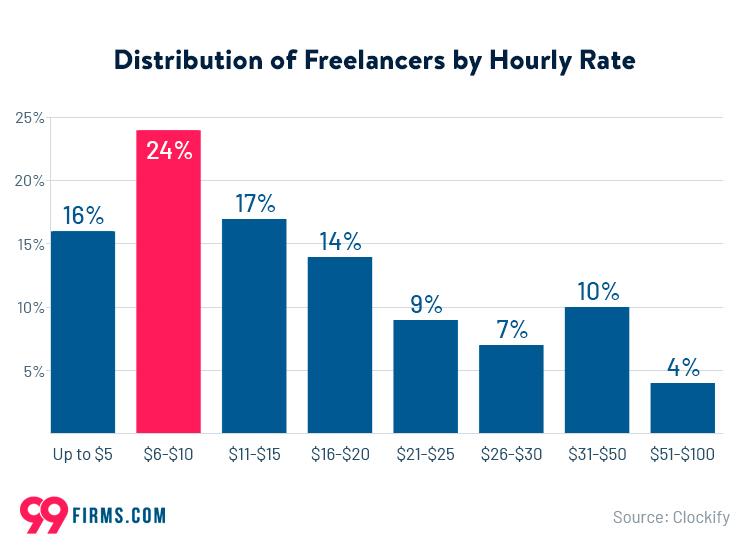
Freelance Rates and Pricing
Determining the right pricing for freelance services can be a daunting task. Rates often depend on a variety of factors, including experience level, industry demand, and project complexity. Freelancers should consider their target market and the value they bring to clients when setting their prices. Below are some essential elements to keep in mind when navigating this intricate pricing landscape:
- Market Research: Investigate what others in your niche are charging.
- Value Proposition: Determine how your unique skills justify your rates.
- Client Budgets: Be aware of what potential clients are willing to spend.
- Time vs. Value: Consider pricing per project instead of an hourly rate for high-value work.
When presenting your pricing structure, clarity is key. Many freelancers find success using tiered pricing models that cater to various client needs and budgets. Here’s a simple overview of how a tiered pricing model might look:
| Package | Price | Included Services |
|---|---|---|
| Basic | $300 | 2 hours of consulting |
| Standard | $500 | 5 hours of consulting + email support |
| Premium | $800 | 10 hours of consulting + email & phone support |
This transparent approach helps clients understand the value associated with each package and allows freelancers to communicate their worth effectively, ultimately leading to more confident transactions.

Building a Freelance Portfolio
When embarking on your freelance journey, an effective portfolio is essential for attracting clients and showcasing your skills. Your portfolio should reflect not only your best work but also the diversity of projects you’ve tackled. Aim to include a mix of formats such as written pieces, design mockups, and case studies. This demonstrates your versatility and adaptability—qualities that clients highly value. Consider the following key elements when curating your portfolio:
- Recent Projects: Highlight work that showcases your current capabilities.
- Client Testimonials: Feature feedback that emphasizes your strengths and reliability.
- Impact Metrics: Include data that illustrates the success of your work, where applicable.
In addition to content, the presentation of your portfolio is equally important. Use layouts that are visually appealing and easy to navigate, as a cluttered portfolio can deter potential clients. Incorporate bold headings and organized sections, making your work easy to find and understand. You might consider creating a simple table to categorize your projects, like below:
| Project Name | Type | Client | Year |
|---|---|---|---|
| Brand Redesign | Design | XYZ Corp | 2023 |
| Blog Writing | Content | ABC Agency | 2022 |
| E-commerce Site | Web Development | ShopNow Inc. | 2023 |
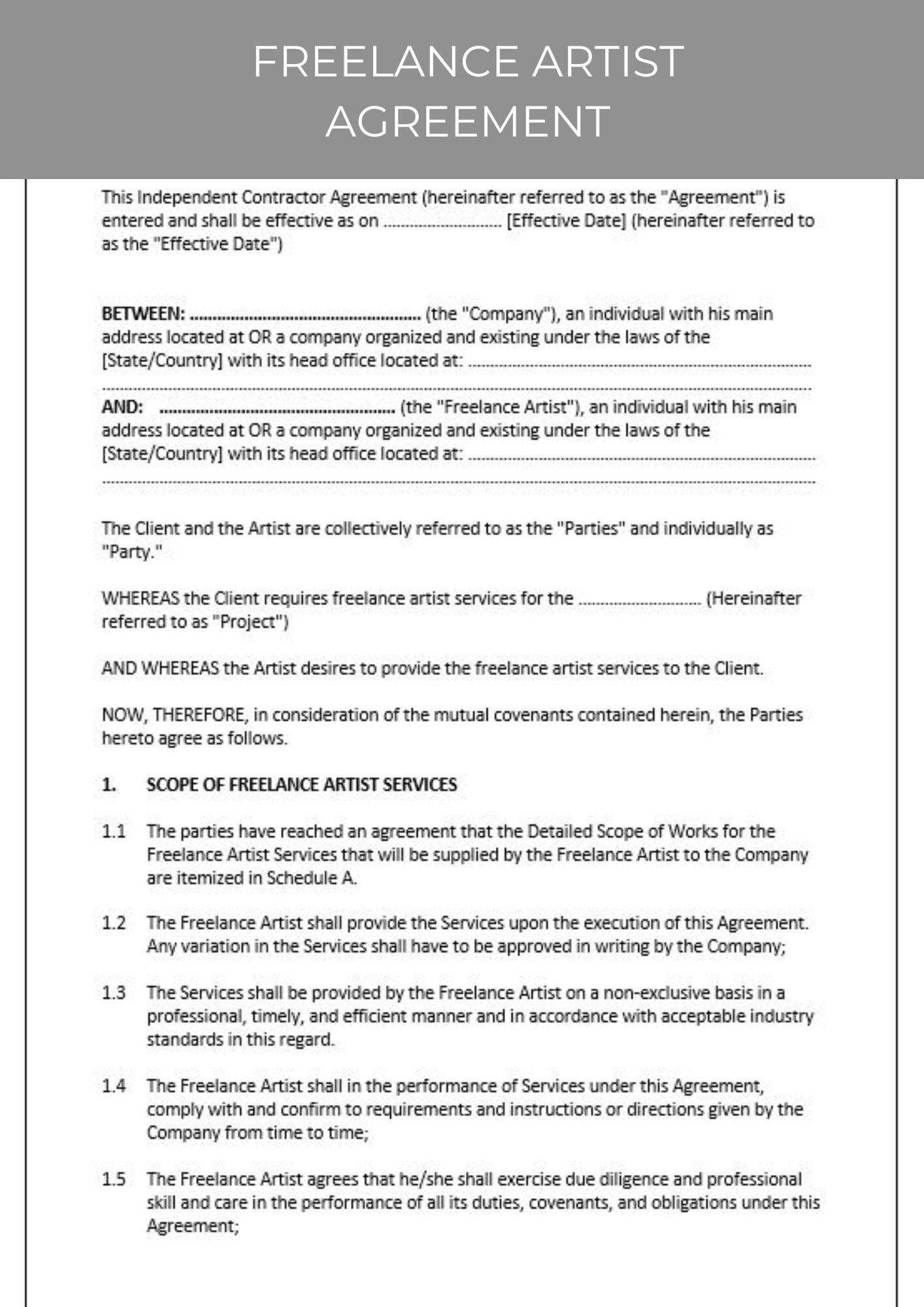
Freelance Contract Templates
When diving into the freelance world, having a solid contract template is essential for safeguarding your interests and clarifying expectations. A well-structured contract not only outlines the scope of work but also includes critical elements such as payment terms, deadlines, and confidentiality clauses. To ensure clarity and professionalism in your freelancing engagements, consider incorporating the following aspects into your contract template:
- Scope of Work: Clearly define the services provided and any deliverables.
- Payment Terms: Specify rates, due dates, and methods of payment.
- Revisions and Edits: Outline the number of revisions included and any fees for additional changes.
- Confidentiality: Address how sensitive information will be handled.
- Termination Clause: Detail conditions under which either party may terminate the agreement.
Using a freelance contract template can create a professional atmosphere and set clear boundaries for both you and your clients. By tailoring these templates to suit unique projects, freelancers can ensure that they are prepared for various scenarios while also enhancing their credibility. Below is a simple table showcasing key contract elements to consider:
| Contract Element | Description |
|---|---|
| Service Description | Detailed overview of the work to be completed. |
| Payment Method | Specify PayPal, bank transfer, or credit card. |
| Timeline | Deadlines for deliverables and project milestones. |
| Ownership Rights | Clarification on the ownership of deliverables post-project. |

Freelance Time Management
Time management is a crucial component of a successful freelance career, especially when it comes to setting and negotiating rates. Freelancers often juggle multiple projects, which can lead to overwhelming workloads if not properly managed. To maintain a balanced schedule, consider implementing the following strategies:
- Prioritize Tasks: Identify high-impact tasks and tackle them first.
- Set Clear Boundaries: Define your working hours and communicate these to clients.
- Use Project Management Tools: Leverage software like Trello or Asana to track progress.
- Regular Breaks: Schedule short breaks to enhance focus and efficiency.
By mastering time management, you can create a structure that allows for flexibility while ensuring that your rates reflect the quality and effort you put into your work. An effective way to determine your pricing may involve a breakdown of how much time you anticipate spending on each project. Below is an example table that illustrates a simple way to calculate your hourly rate based on desired income:
| Desired Annual Income | Hours Worked per Week | Weeks Worked per Year | Hourly Rate |
|---|---|---|---|
| $50,000 | 20 | 50 | $50 |
| $75,000 | 25 | 50 | $60 |
| $100,000 | 30 | 50 | $67 |
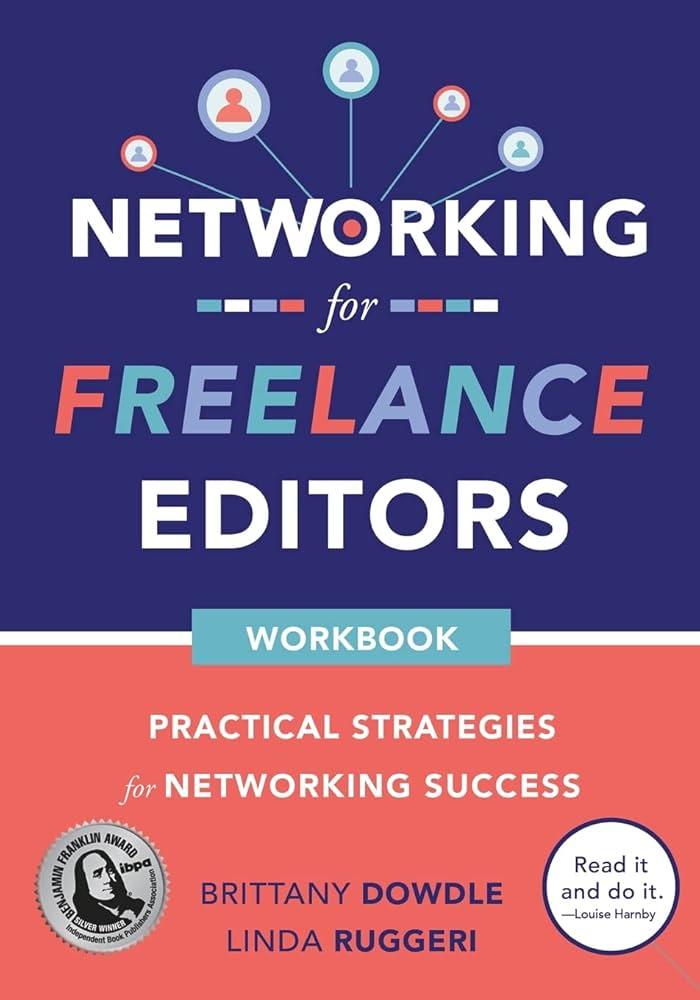
Freelance Networking
Building a strong network is essential for freelancers looking to understand the complexities of pricing and rates in their respective industries. Engaging with fellow freelancers offers insights into market trends, client expectations, and effective negotiation strategies. Consider these avenues for expanding your network:
- Online Communities: Join platforms like LinkedIn, Facebook groups, or industry-specific forums where freelancers congregate to share knowledge.
- Local Meetups: Attend workshops, conferences, or networking events that allow you to meet others face-to-face.
- Collaborative Projects: Partner with other freelancers on projects, which can not only diversify your portfolio but also foster valuable relationships.
Understanding various pricing models is crucial for freelancers aiming to accurately assess their worth. By having direct conversations with peers, you can gather information on what others charge and why. This collective knowledge can help you establish competitive rates. Below is a simple comparison of different pricing strategies freelancers might employ:
| Pricing Model | Description | When to Use |
|---|---|---|
| Hourly Rate | Charging a set rate for each hour worked. | When projects are open-ended or unpredictable. |
| Flat Fee | A predetermined total price for a project. | For well-defined projects with clear deliverables. |
| Retainer | Ongoing payment for continued access to services. | When clients require ongoing work or consultation. |

Freelancing in Tech
In the ever-evolving world of technology, understanding the dynamics of freelance rates is essential for both newcomers and seasoned professionals. Freelancers often face the challenge of balancing their skills against market demands, leading to a wide range of pricing structures. Here are some factors that can influence your pricing:
- Experience Level: Rates typically increase with expertise, as clients are willing to pay a premium for proven skills.
- Project Complexity: More complicated projects usually command higher fees due to the increased time and specialized skills required.
- Industry Standards: Staying informed about the average rates in your niche can help you set competitive pricing.
- Geographic Location: Clients may offer different rates based on your location, which could affect your final pricing structure.
Additionally, freelancers may adopt various pricing strategies to optimize their earnings. Consider the following common methods:
| Pricing Method | Description |
|---|---|
| Hourly Rate | Charging clients by the hour for services rendered. |
| Project-Based | A fixed price for a complete project, providing budget clarity for clients. |
| Retainer | Ongoing work with a regular monthly fee, ensuring stable income. |
| Value-Based | Pricing based on the value delivered to the client rather than time spent. |

Freelance Taxes and Accounting
For freelancers, understanding tax responsibilities can feel like navigating a maze. Unlike traditional employees, freelancers are considered self-employed, which means they bear the responsibility for tracking their own income, expenses, and tax obligations. It’s crucial to maintain meticulous records of your financial activities and categorize transactions effectively. Here are a few things to keep in mind:
- Income Tracking: Ensure all your earnings are documented, from clients to side projects.
- Expense Deductions: Familiarize yourself with tax-deductible expenses, such as home office costs, equipment purchases, and travel expenses.
- Quarterly Payments: Anticipate making estimated tax payments every quarter to avoid surprises during tax season.
While it may seem daunting, leveraging accounting software can simplify your financial management process. Many of these tools offer features tailored for freelancers, helping to automate invoicing, track time, and monitor expenses. To illustrate the tax implications with different income levels, consider the following table:
| Annual Income | Estimated Tax Rate | Net Income After Taxes |
|---|---|---|
| $40,000 | 15% | $34,000 |
| $75,000 | 25% | $56,250 |
| $100,000 | 30% | $70,000 |
Keeping your finances organized is not just about avoiding trouble with tax authorities; it can also provide greater insight into your business’s performance. By regularly reviewing your financial reports, you can make informed decisions about raising your rates, investing back into your business, or expanding your services. With the right tools and knowledge, managing your taxes as a freelancer can transform from a chaotic chore into a streamlined process.
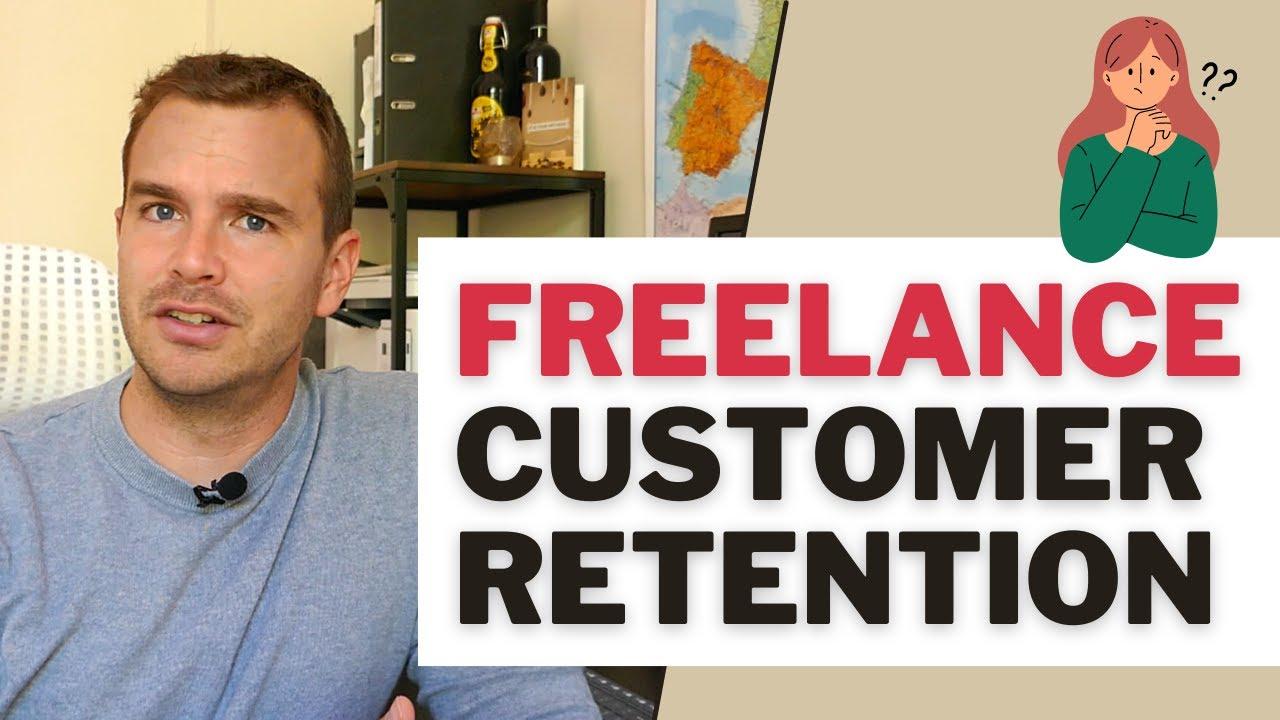
Freelance Client Retention
Successful freelance work does not solely depend on attracting new clients; retaining existing ones is equally, if not more, crucial. By ensuring your current clients feel valued and understood, you can foster long-lasting relationships that lead to repeat business and referrals. Here are some effective strategies to enhance client retention:
- Open Communication: Regularly updating clients on progress and being responsive to their queries helps build trust.
- Quality Deliverables: Consistently delivering high-quality work on time is fundamental to maintaining a positive reputation.
- Feedback Loop: Actively seek feedback and demonstrate your willingness to adapt based on client needs.
- Personal Touch: Acknowledge milestones or personal achievements in their business; it can make a significant difference.
Moreover, implementing a structured approach to client management can enhance retention rates. Consider using a simple rating system to evaluate your clients based on their level of engagement and satisfaction. This can help you focus your efforts on those who may need a bit more attention:
| Client Name | Engagement Level | Satisfaction Rating |
|---|---|---|
| ABC Corp | High | 8/10 |
| XYZ Ltd | Medium | 6/10 |
| 123 Inc | Low | 4/10 |
By keeping track of these factors, you can identify which clients need more nurturing and adapt your strategies accordingly. Applying these methods will not only enhance your client relationships but also solidify your reputation in the freelance community.

Freelancing Full-Time vs Part-Time
As you venture into the world of freelancing, choosing between full-time and part-time commitments can significantly impact your rate-setting and overall business strategy. Full-time freelancers typically immerse themselves in their craft, investing extensive hours to build client relationships and expand their portfolios. This dedication often empowers them to command higher rates due to their availability and ability to handle larger projects. Some advantages of freelancing full-time include:
- Increased earning potential through diversified projects
- Stronger client loyalty and recognition
- More time for professional development and networking
On the other hand, freelancing part-time offers its own unique benefits, particularly for those balancing other personal or professional responsibilities. Part-time freelancers enjoy flexibility, allowing them to explore different fields without the pressure of financial instability. This arrangement can also encourage competitive pricing, as part-time freelancers often cater to clients seeking more budget-friendly options. Key benefits of part-time freelancing include:
- Reduced risk while testing freelance waters
- Ability to maintain a steady income from additional sources
- Flexible schedule to accommodate personal commitments
| Factor | Full-Time | Part-Time |
|---|---|---|
| Earning Potential | Higher | Variable |
| Time Commitment | Extensive | Flexible |
| Client Relationships | Stronger | More Casual |
| Risk | Higher | Lower |

Freelance Job Boards
Exploring can be an effective way to discover diverse opportunities and assess market pricing for your services. These platforms not only connect freelancers with clients but also provide valuable insights into industry standards. Some popular options to consider include:
- Upwork: A vast marketplace with varied project sizes and competitive rates.
- Fiverr: A platform focusing on service packages, allowing freelancers to set their prices.
- Freelancer: Offers a bidding system, enabling freelancers to negotiate rates.
- Guru: Facilitates long-term collaborations with flexible pricing structures.
When registering on these platforms, take the time to compare pricing strategies within your niche. One effective method is to observe how peers structure their rates, which can help in defining your own. Here’s a brief overview of typical freelance pricing models:
| Pricing Model | Description |
|---|---|
| Hourly Rate | Charging based on the time spent on a project. |
| Fixed Price | A set fee agreed upon before starting the work. |
| Retainer | A recurring fee for ongoing services or projects. |

Freelance Branding Strategies
Establishing a strong personal brand is essential for freelancers navigating the complex landscape of rates and pricing. Your brand reflects not just your style and skill, but also your value proposition in a competitive market. Consider focusing on the following elements to build a recognizable and appealing brand:
- Unique Value Proposition: Clearly define what sets you apart from others in your field.
- Consistent Visual Identity: Use the same color palette, fonts, and imagery across all platforms to create recognition.
- Engaging Online Presence: Cultivate a professional website and active social media profiles that showcase your work.
- Client Testimonials: Use feedback from past clients to build trust and credibility.
Your pricing strategy is also an integral part of your branding. It can communicate your level of expertise and professionalism. To effectively manage your rates, consider using a well-structured approach, such as:
| Pricing Method | When to Use | Benefits |
|---|---|---|
| Hourly Rate | For short-term projects or when scope is unclear | Flexibility, easy to adjust based on time |
| Project-Based Fee | For well-defined projects with clear deliverables | Clear pricing, builds trust with clients |
| Retainer Model | For ongoing or long-term relationships | Predictable income, fosters strong client relationships |

Freelancing in Graphic Design
offers a wide array of opportunities, but understanding how to set your rates effectively is key to success. When it comes to pricing, it’s crucial to consider your unique skills, experience, and the value you provide to clients. Here are some factors to keep in mind:
- Project Complexity: More intricate projects may warrant higher rates due to the skill and time required.
- Industry Norms: Researching standard rates within your niche can provide a base for your pricing structure.
- Client Budget: Tailoring your approach based on a client’s budget can help in negotiating fair compensation.
Creating a clear breakdown of your pricing can also enhance transparency and build trust with potential clients. A simple rate chart may help in establishing your fees at a glance. Consider the following format:
| Service Type | Starting Rate |
|---|---|
| Logo Design | $250 |
| Brochure Design | $300 |
| Social Media Graphics | $150 |
By articulating your rates in this way, clients can easily understand the value they’re receiving while also allowing you the flexibility to negotiate and adjust based on the project’s requirements.

Freelance Personal Development
Setting freelance rates can be a daunting task, but it’s essential for establishing a sustainable career. Start by conducting market research to understand what others in your field and geographical area are charging. This can provide a solid foundation for your pricing strategy. Consider the following factors that can influence your rates:
- Experience Level: More experienced freelancers can command higher fees.
- Specialization: Specialized skills often allow for greater pricing flexibility.
- Project Complexity: More complex projects may necessitate higher rates.
- Client Budget: Understanding your client’s budget can help tailor your proposal.
As you refine your pricing strategy, consider different pricing structures that suit your business model. For instance, hourly rates might be ideal for projects with undefined scopes, while fixed-rate pricing can be beneficial for more predictable tasks. It’s also wise to incorporate a table for a quick reference of your services and respective pricing:
| Service | Rate |
|---|---|
| Consultation (per hour) | $50 |
| Copywriting (per project) | $300 |
| Website Design (fixed) | $1500 |
Pricing transparently enables you to showcase professionalism and build trust with potential clients while ensuring that you value your own work appropriately.
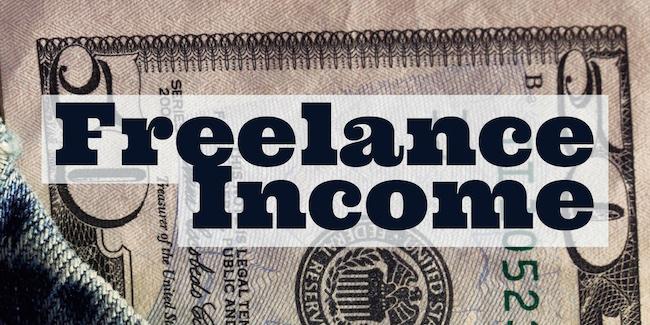
Freelance Income Diversification
Diversifying your freelance income is not merely a strategy for stability but an opportunity for growth and creativity. By exploring multiple avenues for income generation, freelancers can shield themselves from economic fluctuations and client dependency. Consider these fruitful options:
- Freelance Projects: Taking on various short-term projects that showcase your skills.
- Passive Income Streams: Creating digital products such as e-books or online courses.
- Affiliate Marketing: Partnering with companies to promote their products for a commission.
- Consulting Services: Offering expert advice in your area of expertise.
- Membership or Subscription Models: Building a community and providing exclusive content for a fee.
To give you an overview of how different freelance avenues can contribute to your total income, consider the following table, which outlines potential earnings from various sources:
| Income Source | Estimated Monthly Earnings |
|---|---|
| Freelance Projects | $1,500 - $3,000 |
| Passive Income Streams | $200 – $1,000 |
| Affiliate Marketing | $100 - $500 |
| Consulting Services | $500 – $2,000 |
| Membership Model | $300 - $800 |
By strategically combining these income streams, you can build a robust financial foundation that not only enhances your earnings but also enriches your professional experience. This multifaceted approach allows for flexibility in pricing and can ultimately lead to a more fulfilling freelance journey.

Freelance Career Growth
As you embark on your freelance journey, understanding the dynamics of rates and pricing can significantly influence your career trajectory. Establishing your fees involves a careful balance between market demand, your skillset, and the wish to earn a sustainable income. Consider the following factors when setting your rates:
- Market Research: Investigate what others in your niche are charging to ensure you remain competitive.
- Value Proposition: Highlight the unique value you bring to clients, justifying your rate.
- Flexibility: Be open to adjusting your pricing based on the project requirements or long-term collaborations.
- Experience Level: Increase your rates as you gain more experience and proven results.
Pricing models can also enhance your profitability while meeting clients’ expectations. Different approaches cater to various project types and client relationships, including:
| Pricing Model | Description |
|---|---|
| Hourly Rate | Charge clients based on the time spent on their projects. |
| Project-Based Pricing | Set a fixed price for specific projects, allowing for clearer budgeting. |
| Retainer Agreements | Establish ongoing contracts for recurring services, ensuring steady income. |
Ultimately, successful hinges on not just your technical skills but also your ability to negotiate and articulate the worth of your services. Embracing a strategic approach to pricing empowers you to build long-lasting relationships with clients while ensuring your own financial stability.
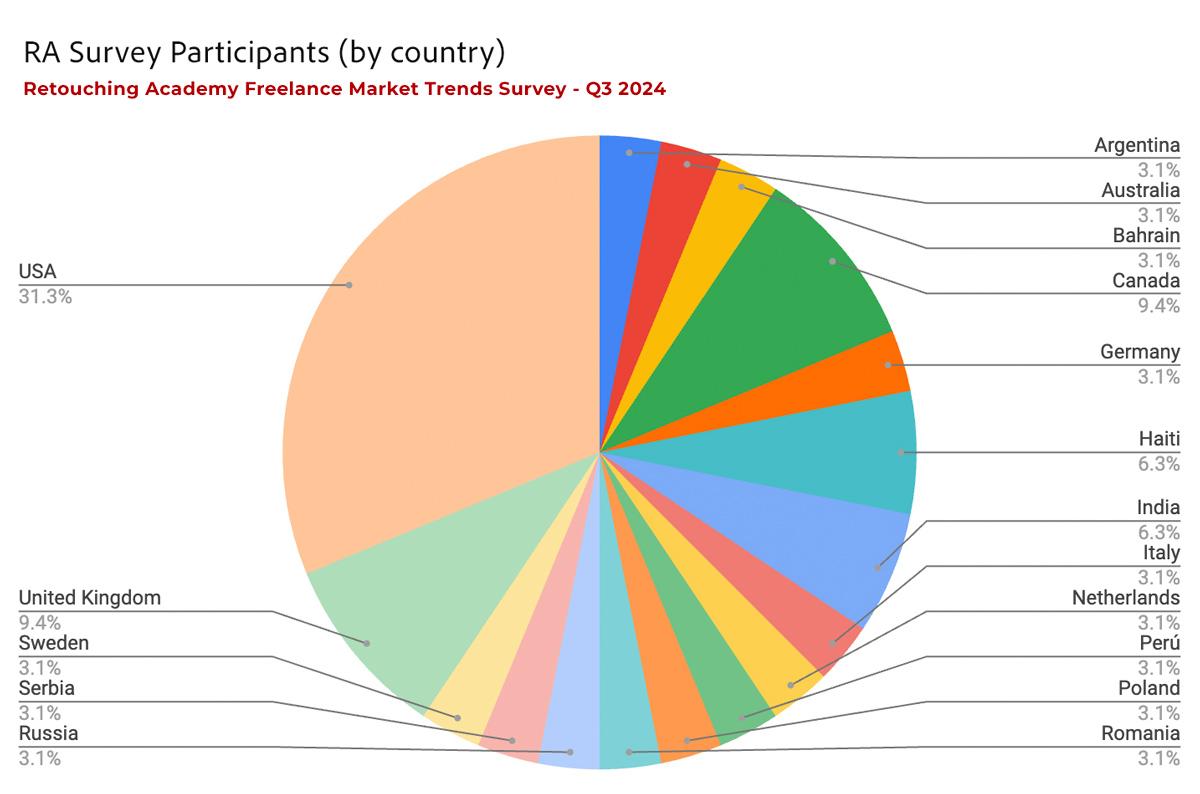
Freelance Market Trends 2024
The freelance market in 2024 is poised to showcase a dynamic evolution in rates and pricing strategies. As remote work continues to gain momentum, demand for specialized skills is skyrocketing. This shifting landscape compels freelancers to adjust their pricing not only based on their expertise but also on market trends. Key factors driving these changes include the rise in digital marketing, software development, and content creation. Freelancers are increasingly adopting value-based pricing models, allowing them to charge according to the impact of their work rather than just the hours spent. As a result, clients are becoming more discerning, seeking out freelancers who can offer tangible results and ROI.
Another trend influencing pricing is the growing importance of niche specialization. Freelancers who can position themselves within specific industries or markets often command higher rates due to their unique expertise and tailored solutions. This fosters a competitive environment where generalists may find it challenging to maintain their pricing. Additionally, the increased accessibility of online platforms has led to a more transparent marketplace, prompting freelancers to continuously monitor and adjust their rates. Below is a brief overview of typical freelance rate ranges by industry in 2024:
| Industry | Average Hourly Rate | Top-tier Rate |
|---|---|---|
| Graphic Design | $35 – $75 | $100+ |
| Web Development | $50 – $120 | $150+ |
| Content Writing | $30 – $60 | $90+ |
| Social Media Management | $25 – $70 | $85+ |
Concluding Remarks
As we traverse the ever-evolving terrain of freelance rates and pricing, it’s clear that understanding this landscape is more than just a matter of arithmetic—it’s an art that balances skill, market demands, and personal worth. Whether you’re a seasoned freelancer or just embarking on your independent journey, the insights shared here serve as a compass to guide your decisions.
With each project and client relationship, you will refine your approach, adapting to shifts in the market and honing your negotiation skills. Remember, pricing is not just about dollars and cents; it’s a reflection of the value you bring to the table. Embrace flexibility, remain informed, and don’t hesitate to seek community support as you navigate this dynamic environment.
As you step forward, let the principles discussed here illuminate your path, empowering you to set your rates with confidence and clarity. The freelance world may be vast and occasionally daunting, but with the right tools, you can carve out your niche and thrive within it. Happy freelancing!


